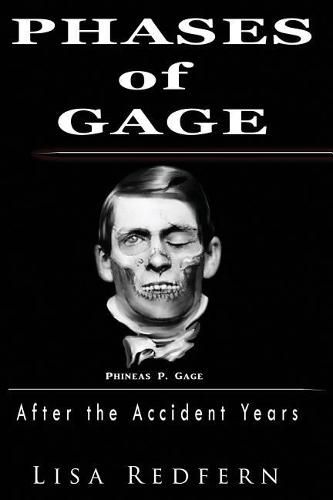Readings Newsletter
Become a Readings Member to make your shopping experience even easier.
Sign in or sign up for free!
You’re not far away from qualifying for FREE standard shipping within Australia
You’ve qualified for FREE standard shipping within Australia
The cart is loading…






An explosion shoots a thirteen-pound iron rod through the head of twenty-five-year-old construction foreman, Phineas Gage. Hurled to the ground, Phineas convulses but remains conscious. He says he doesn’t feel pain. When the accident occurred, Phineas was laying track on the Rutland & Burlington Railroad in Vermont. The year was 1848. One of the ‘great’ medical curiosities of all time, Phineas’s head injury may have been the first case to link brain studies with human personality. In this novella, Phineas, his sister, and her husband share their experiences during the years after Phineas’s accident. Their stories tell: how the family coped with Phineas’s head injury, the challenges of traveling to California with him, and how his skull and tamping iron came to be on display in a Harvard Museum. Based on a true story and known facts (at the time of writing), this work of fiction brings contemporary emotional qualities to the people who experienced a family tragedy that became a historic event. The Case of Phineas Gage is still commonly studied by neurology and psychology students today.
$9.00 standard shipping within Australia
FREE standard shipping within Australia for orders over $100.00
Express & International shipping calculated at checkout
An explosion shoots a thirteen-pound iron rod through the head of twenty-five-year-old construction foreman, Phineas Gage. Hurled to the ground, Phineas convulses but remains conscious. He says he doesn’t feel pain. When the accident occurred, Phineas was laying track on the Rutland & Burlington Railroad in Vermont. The year was 1848. One of the ‘great’ medical curiosities of all time, Phineas’s head injury may have been the first case to link brain studies with human personality. In this novella, Phineas, his sister, and her husband share their experiences during the years after Phineas’s accident. Their stories tell: how the family coped with Phineas’s head injury, the challenges of traveling to California with him, and how his skull and tamping iron came to be on display in a Harvard Museum. Based on a true story and known facts (at the time of writing), this work of fiction brings contemporary emotional qualities to the people who experienced a family tragedy that became a historic event. The Case of Phineas Gage is still commonly studied by neurology and psychology students today.